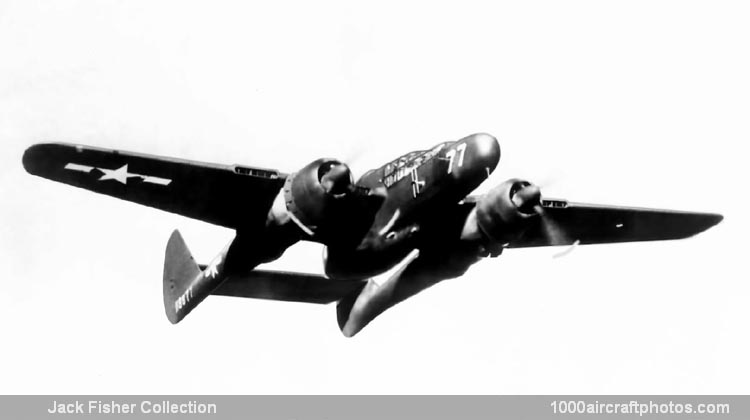12/31/2010. Remarks by Johan Visschedijk: "The first warplane evolved from the outset for the nocturnal intercept role to achieve service status, the Black Widow was designed to meet the requirements of an outline specification issued on October 2, 1940. The XP-61 was a radar-equipped, heavily-armed three-seater of twin-engined, twin-boom configuration, two prototypes being ordered on January 11, 1941, and the first of these flying 15 months later, on May 21, 1942. By this time, thirteen pre-series YP-61s (the second is shown above) and 560 series aircraft had been ordered.
The first 45 of the series aircraft (P-61A-1s) having similar 2,000 hp Pratt & Whitney R-2800-10 Double Wasp eighteen-cylinder radials as the YP-61s, subsequent aircraft received the 2,250 hp R-2800-65 radials. Armament comprised four fixed 0.787 in (20 mm) cannon, and the 13 YP-61s and first 37 P-61As also had a remotely-controlled dorsal barbette mounting four 0.50 in (12.7 mm) machine guns. This barbette resulted in tail buffet problems, and the remaining 163 P-61As were completed as two-seaters with the turret omitted.
Deliveries of the P-61A commenced in October 1943, giving place to the P-61B in July 1944, 450 of this sub-type being built. The P-61B featured an 8 in (20.3 cm) nose cone extension, but was otherwise essentially similar to the P-61A, and with the 201st B-series aircraft the four-gun dorsal barbette was reinstated."
